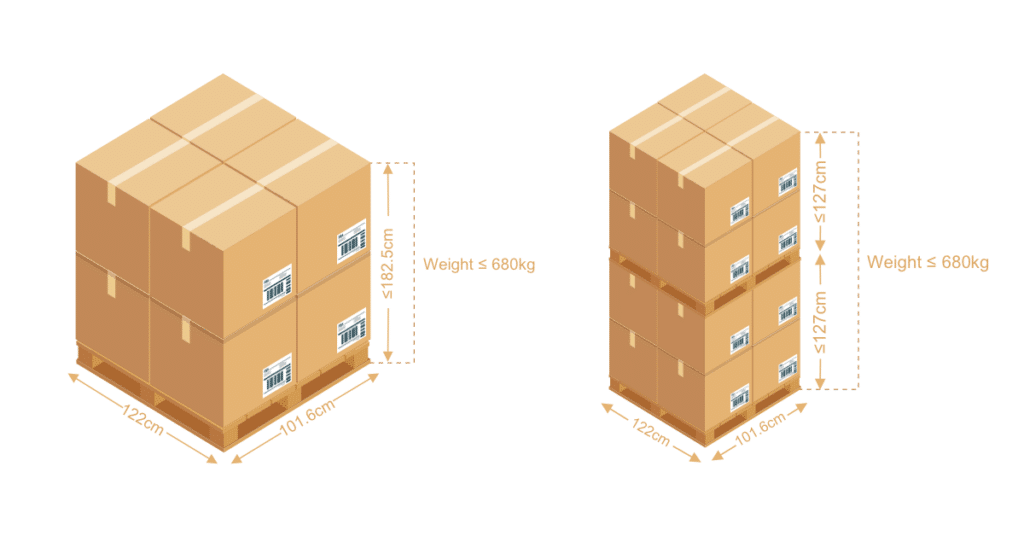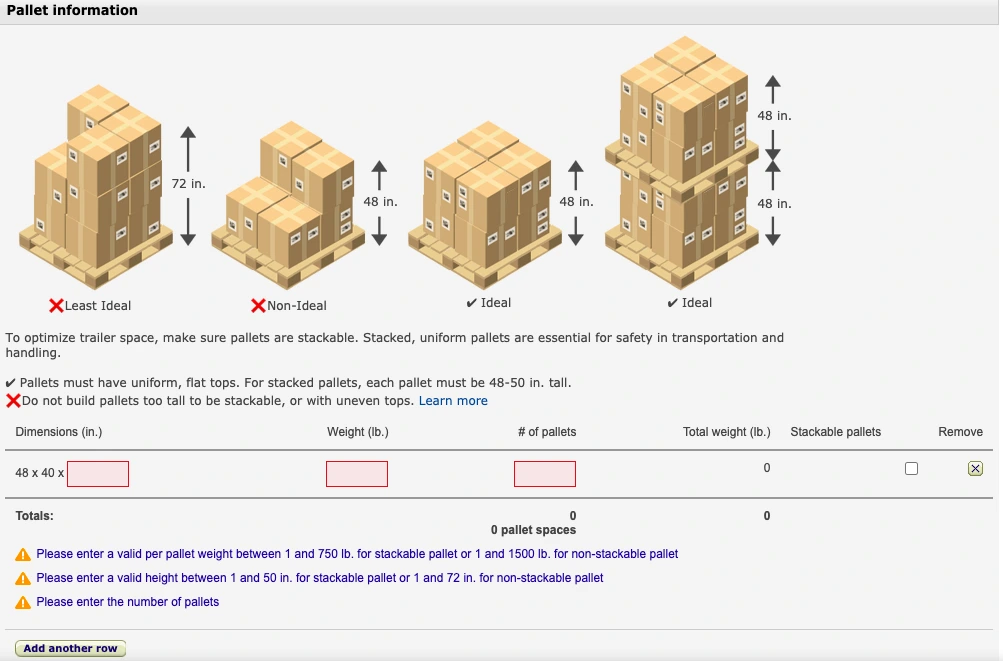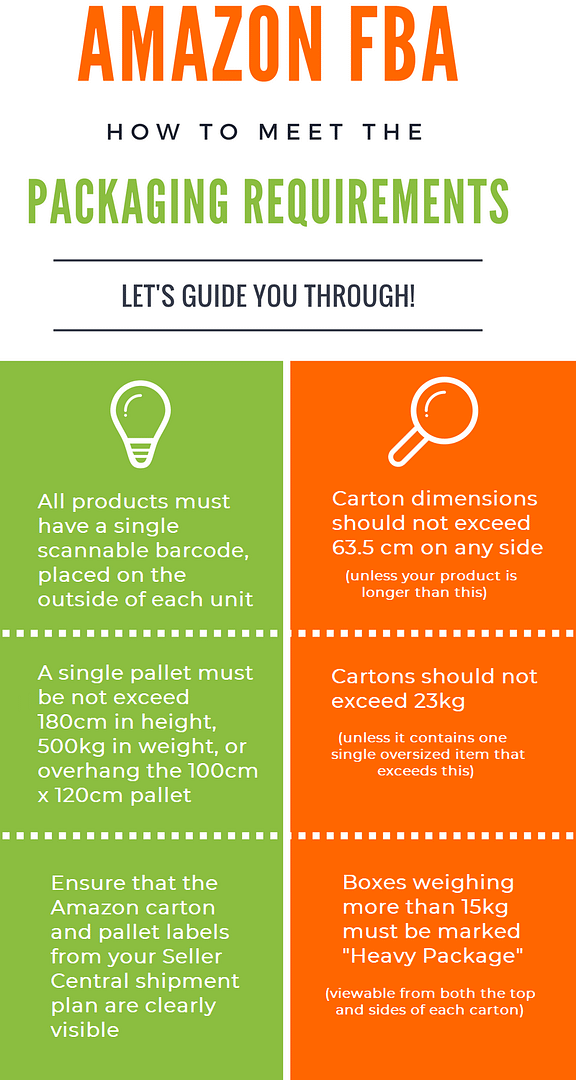Unlock the secrets to FBA pallet success with our simplified guide – perfect for beginners and experienced sellers alike!
Table of Contents
- Introduction to Amazon FBA and Pallet Shipping
- What is a Pallet?
- The Basics of Amazon FBA Pallet Requirements
- Sending Pallets to Amazon FBA
- Amazon FBA Warehouse Locations
- Packaging and Shipping Guidelines
- Using the Amazon FBA Calculator for Pallets
- Common Mistakes to Avoid
- Benefits of Pallet Shipping with Amazon FBA
- Conclusion
- FAQs
Introduction to Amazon FBA and Pallet Shipping
Amazon FBA, which stands for Fulfillment by Amazon, is a service that helps sellers store their products in Amazon’s fulfillment centers. When customers place orders, Amazon picks, packs, and ships the products on behalf of the sellers. Understanding how pallet shipping works is crucial for sellers using Amazon FBA, as it can help streamline the process and save on shipping costs.
When it comes to Amazon FBA pallet requirements, it’s essential to meet the specific guidelines set by Amazon to ensure smooth and efficient shipping of your products. By following these requirements, sellers can avoid delays and potential additional fees.
What is a Pallet?
Have you ever wondered how big shipments of products are moved around in warehouses or on trucks? Well, that’s where pallets come into play! A pallet is like a big, flat wooden platform that is used to stack and transport goods in a safe and organized way. It’s kind of like a big, sturdy shelf that makes it easy to move lots of items all at once.
Picture a flat square made of wooden slats or sometimes metal, and that’s basically what a pallet looks like. These pallets are super handy because they make it much easier to move heavy boxes or products using machines like forklifts or pallet jacks.
When sellers need to send a large number of items to places like Amazon’s warehouses for their FBA (Fulfillment by Amazon) program, they often stack these items on pallets. This helps keep everything together and makes it simpler for Amazon to receive, store, and ship out these products to customers.
The Basics of Amazon FBA Pallet Requirements
In order to successfully ship your products using Amazon FBA, it is crucial to understand the specific requirements for pallets. Let’s delve into the key details you need to know about Amazon FBA pallet requirements.

Image courtesy of fbabee.com via Google Images
Pallet Size and Quality
When it comes to pallet size, Amazon FBA requires standard pallets to measure 48 inches in width and 40 inches in length. Additionally, the quality of the pallet is essential to ensure the safety and security of your products during transit. Make sure that the pallet is in good condition, with no missing or damaged boards.
Weight and Height Limits
Amazon FBA also imposes weight and height restrictions on pallets. The maximum weight allowed for a pallet is 1,500 pounds, including both the products and the pallet itself. Moreover, the height of the pallet should not exceed 72 inches to facilitate handling and storage in Amazon’s warehouses.
Sending Pallets to Amazon FBA
When you have your products ready to be shipped to Amazon for FBA, you need to understand how to send them on a pallet. It might sound complicated, but don’t worry, we’ll walk you through the process step by step.
Preparing Your Pallet
The first step is to prepare your pallet for shipping. Make sure your products are securely placed on the pallet and that they won’t shift during transport. It’s essential to follow Amazon’s guidelines for pallet preparation to avoid any issues.
Shipping Your Pallet
Once your pallet is ready, it’s time to ship it off to an Amazon FBA warehouse. You can either arrange for a carrier to pick up the pallet or deliver it yourself. Just make sure to choose a reliable carrier to ensure your products arrive safely.
Amazon FBA Warehouse Locations
When it comes to shipping products via pallets to Amazon FBA, one crucial factor to consider is the location of the Amazon FBA warehouses. These warehouses are strategically situated across the country to ensure efficient storage and delivery of goods to customers.

Image courtesy of fbabee.com via Google Images
Knowing the proximity of these warehouses to your business or supplier can greatly impact the shipping costs and delivery times. The closer you are to an Amazon FBA warehouse, the lower your shipping expenses are likely to be, and the quicker your products can reach customers.
Packaging and Shipping Guidelines
When it comes to selling products through Amazon FBA, following the packaging and shipping guidelines is crucial. By ensuring that your items are properly labeled and packaged, you can avoid delays and potential issues with your shipments. Here are some important guidelines to keep in mind:
Labeling and Marking
Before sending your pallet to an Amazon FBA warehouse, make sure that all items are labeled correctly. Each item should have a unique barcode that is scannable for easy identification. Additionally, the pallet itself should be marked with the necessary information, such as the destination warehouse address and your seller information.
Proper Packaging
Properly packaging your items on the pallet is essential to prevent damage during transit. Make sure that each item is securely wrapped or boxed to avoid any movement that could lead to breakage. Additionally, consider using shrink wrap or straps to secure the items to the pallet and prevent shifting.
Using the Amazon FBA Calculator for Pallets
When you’re a seller using Amazon’s Fulfilled by Amazon (FBA) service, it’s important to understand how much it will cost to ship your products. This is where the Amazon FBA calculator comes in handy, especially when you’re dealing with pallet shipments.

Image courtesy of www.helium10.com via Google Images
If you’re wondering how much it will cost to ship your pallets to Amazon’s fulfillment centers, the Amazon FBA calculator can help you estimate those costs accurately. By inputting details like the dimensions and weight of your pallet, as well as the origin and destination locations, the calculator can give you a good idea of the shipping fees involved.
Using the Amazon FBA calculator is easy and straightforward. All you need to do is enter the required information, and the calculator will do the rest for you. This tool can save you time and prevent any surprises when it comes to shipping costs.
Common Mistakes to Avoid
When it comes to sending pallets to Amazon FBA, there are some common mistakes that sellers should steer clear of to ensure a smooth shipping process. Let’s take a look at some of these pitfalls:
| Item | Description | Dimensions | Weight |
|---|---|---|---|
| Pallet Size | Standard pallet size recommended for FBA shipments | 48″ x 40″ | N/A |
| Max Weight | Maximum weight allowed for a pallet | N/A | 1500 lbs |
| Pallet Type | Recommended pallet type for FBA shipments | Wood | N/A |
| Stacking | Maximum number of boxes allowed to stack on pallet | N/A | 4 |
Ignoring Amazon FBA Pallet Requirements
One of the biggest mistakes sellers make is ignoring Amazon FBA’s pallet requirements. It’s crucial to adhere to the specified pallet size, weight, and height limits to avoid any delays or complications in the shipping process. Be sure to carefully review and follow the guidelines provided by Amazon to prevent any issues.
Inadequate Preparation of Pallets
Another common mistake is not properly preparing your pallet for shipment. Failing to secure items on the pallet, not labeling it correctly, or using substandard packaging materials can lead to damaged goods or rejected shipments. Take the time to adequately prepare your pallet according to Amazon’s guidelines to avoid any setbacks.
Incorrect Shipping Process
Incorrectly shipping your pallet can also pose a problem. Whether it’s using the wrong carrier, not scheduling pickups in advance, or neglecting to track your shipment, these errors can result in lost packages or delayed deliveries. Make sure to carefully choose a reliable carrier, plan your shipments accordingly, and monitor the progress of your pallet to ensure a smooth transit.
By being mindful of these common mistakes and taking the necessary precautions, sellers can successfully send their pallets to Amazon FBA without any hiccups.
Benefits of Pallet Shipping with Amazon FBA
When it comes to selling products through Amazon FBA, utilizing pallet shipping can offer numerous advantages for sellers. Let’s explore some of the key benefits:

Image courtesy of www.shippo.co.uk via Google Images
Saving Time and Effort
By sending multiple products on a single pallet to Amazon’s fulfillment centers, sellers can streamline their shipping process. This can save time and effort compared to sending individual items separately.
Cost-Effectiveness
Consolidating products on a pallet can also lead to cost savings. Shipping in bulk is often more economical than shipping items individually. Sellers can benefit from reduced shipping costs per unit, ultimately increasing their profit margins.
Efficient Handling
Pallet shipping can simplify the receiving and storage process at Amazon’s warehouses. With products grouped together on pallets, warehouse staff can efficiently move, store, and pick items for fulfillment orders. This can lead to quicker processing times and improved overall efficiency.
Reduced Risk of Damage
When properly secured and packaged on a pallet, products have less chance of being damaged during transit. Pallets provide stability and protection, reducing the risk of items getting jostled or crushed during shipping. This can help sellers maintain the quality of their products and minimize returns due to damage.
Overall, using pallet shipping with Amazon FBA can offer sellers a range of benefits, from saving time and money to ensuring the safe and efficient delivery of their products to customers.
Conclusion
In conclusion, understanding and following Amazon FBA’s pallet requirements is essential for successful shipping and selling on the platform. By adhering to the guidelines set by Amazon, sellers can ensure their products are packaged, labeled, and shipped correctly, minimizing the risk of delays or issues with their inventory. Pallet shipping offers a convenient way to streamline the transportation of goods, especially for larger quantities, and can save sellers time and money in the long run.
Remember, when preparing your pallets for shipment, always pay attention to the size, weight, and quality requirements outlined by Amazon. Proper packaging, labeling, and marking are vital to ensure your items reach the intended destination in good condition. Utilizing tools like the Amazon FBA calculator can also help you estimate shipping costs accurately, allowing for better planning and budgeting.
By avoiding common mistakes and taking advantage of the benefits of pallet shipping with Amazon FBA, sellers can optimize their operations and enhance their overall selling experience on the platform. Being mindful of warehouse locations and adhering to packaging and shipping guidelines can set you up for success in your e-commerce endeavors.
So, whether you’re a seasoned seller or just starting out, understanding Amazon FBA’s pallet requirements is key to thriving in the competitive e-commerce landscape. With the right knowledge and strategies in place, you can make the most of pallet shipping and elevate your business to new heights on Amazon.
FAQs
What is the ideal pallet size for Amazon FBA?
For Amazon FBA, the ideal pallet size is typically 48 inches by 40 inches. It’s important to adhere to these dimensions to ensure your pallet can be properly stored and shipped within Amazon’s warehouses.
Can I ship multiple items on one pallet?
Yes, you can ship multiple items on one pallet for Amazon FBA. However, it’s crucial to follow Amazon’s guidelines for packaging and securing items on the pallet to prevent damage during transport and storage.
What happens if I don’t follow Amazon’s pallet requirements?
If you fail to comply with Amazon’s pallet requirements, your shipment may be rejected, delayed, or incur additional fees. It’s essential to carefully follow the guidelines to ensure your products reach Amazon’s warehouses smoothly and without any issues.
